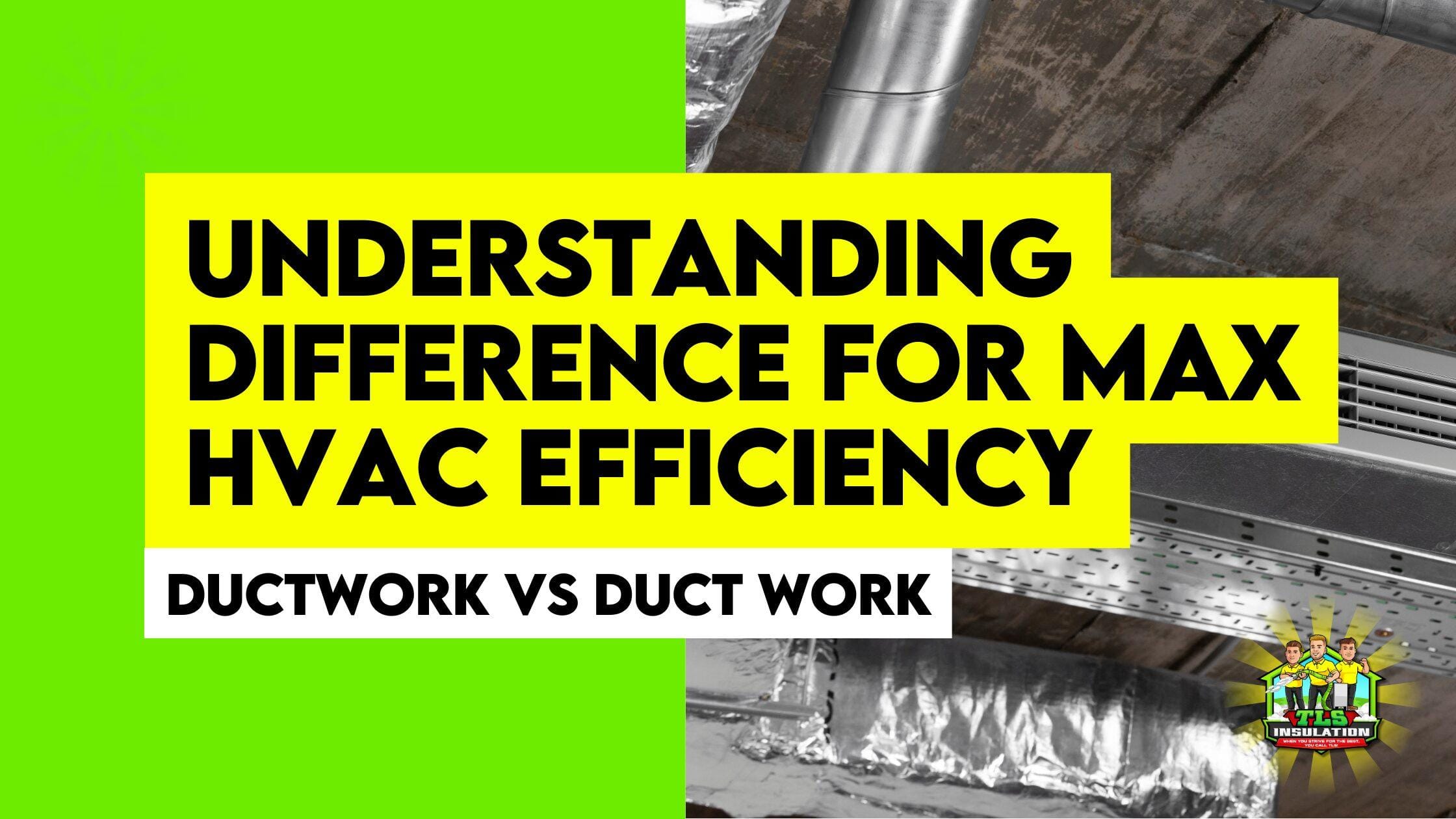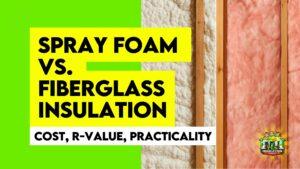Ductwork or duct work? Confused, Right? So, when discussing your home’s HVAC system, you may hear the terms “duct work” and “ductwork” used often.
While these terms may sound different, they essentially refer to the same thing; the duct system that moves air throughout your home. Technically answering what is ductwork and duct work; Ductwork includes materials like flexible ducts and rigid ducts, which are used to distribute air for heating, cooling, and ventilation.
On the other hand, duct work is sometimes used to describe the process of installing these systems. So when it comes to Ductwork vs Duct Work , the goal is the same: ensuring your HVAC system operates efficiently, improves indoor air quality, and reduces energy consumption.
Think of an Example:
Think of ductwork as the highway that delivers air to every room, while duct work refers to the process of laying down that highway. Both are essential for smooth airflow in your home.
Common Ductwork Problems That Impact Your Home’s Comfort and Efficiency
Ductwork is the heart of your HVAC system, but problems with your ducts can lead to poor airflow, higher energy bills, and discomfort.
Air Leaks: The Silent Energy Drain
Air leaks are a major cause of energy loss in many homes with even a small crack or loose connection in your ductwork can cause heated or cooled air to escape before it reaches its destination. This means your HVAC system has to work harder to maintain the temperature, leading to higher utility bills and uneven heating or cooling throughout your home.
Why it matters: Leaky ducts reduce your HVAC system’s efficiency, causing unnecessary strain, higher energy consumption, and increasing wear on your system.
Solution: Regular inspections and proper sealing of ducts can prevent air leaks, improving your system’s energy efficiency and extending its lifespan.
Poor Duct Insulation: Wasteful Heat Loss
Inadequate or missing ductwork insulation is another common issue, especially in attics or crawl spaces where temperature control is difficult. When ducts are poorly insulated, they allow heat to escape or enter, forcing your heating and cooling system to work harder than needed. This can lead to discomfort and increased energy use.
Why it matters: If your ducts are not insulated properly, your HVAC system could be using more energy to keep your home at the right temperature, raising energy bills.
Solution: Adding or improving duct insulation helps regulate temperature more effectively, ensuring your HVAC system works at optimal efficiency and keeps your home comfortable year-round.
Blocked or Dirty Ducts: Poor Airflow and IAQ Issues
Dust, debris, and pet hair can build up in your ducts over time, restricting airflow and affecting indoor air quality (IAQ). So obviously blocked or dirty ducts would prevent air from flowing freely, causing your system to run inefficiently and circulate contaminants throughout your home.
Why it matters: Clogged ducts not only reduce airflow but can also spread allergens and particles that affect your indoor air quality, leading to discomfort and potential health issues.
Solution: Regular duct cleaning helps maintain clean, unobstructed airflow, improving air quality and ensuring your HVAC system operates efficiently.
Ductwork Sizing: Too Small or Too Large
If your ducts are improperly sized, it can cause airflow problems that affect both the comfort and efficiency of your HVAC system. Ducts that are too small can restrict airflow, while ducts that are too large can cause uneven pressure, leading to hot or cold spots in your home.
Why it matters: The right duct size ensures optimal airflow, reduces energy waste, and keeps the temperature balanced in every room. Undersized or oversized ducts cause poor HVAC performance and discomfort.
Solution: Proper duct system sizing during installation or replacement ensures efficient air distribution, better energy efficiency, and a more comfortable living environment.
Ductwork Corrosion: A Hidden Danger
In homes with older metal ducts, corrosion can be a hidden problem, especially in areas with high humidity, like Florida. Over time, corroded ducts can develop holes or cracks, leading to air leaks and even mold growth due to moisture build-up. This is a major concern for both indoor air quality and the long-term integrity of your system.
Why it matters: Corroded ducts not only reduce efficiency but also pose a health risk by increasing the potential for mold and bacteria in your air supply.
Solution: Regular maintenance and inspection are key. If you suspect corrosion, consider replacing old ducts with more durable materials like galvanized steel or flexible PVC, which are less prone to corrosion.
Why Proper Duct Work is Essential for Florida Homes
Proper duct work is crucial for homes in humid climates like Florida, Texas, Louisiana, and other coastal areas. These regions experience high humidity and heat, which puts extra strain on your HVAC system and makes it essential to have well-sealed, properly insulated ducts.
Prevents Air Leaks and Energy Waste
In areas like Florida and Texas, leaky ducts are a common issue. Even small air leaks in the system can cause your HVAC system to work overtime, leading to higher energy bills. Duct sealing is critical to ensure air doesn’t escape before it reaches the desired room, making your system work harder to maintain comfort levels.
Controls Moisture and Improves Air Quality
The high humidity in Florida, Louisiana, and other coastal states can cause moisture buildup inside your ducts. Without proper duct insulation and sealing, this moisture can lead to mold growth, which negatively impacts your indoor air quality (IAQ).
Ductwork sealing prevents moisture from entering ducts, keeping the air in your home cleaner and healthier.
Ensures Consistent Comfort Year-Round
For homes in humid climates, properly insulating and sealing your ducts ensures that cool or warm air is distributed evenly throughout your home. When ducts are uninsulated, they can lose or gain heat, which forces your HVAC system to work harder, leading to uneven temperatures.
With proper ductwork insulation, your system will run more efficiently, keeping your home at a comfortable temperature no matter the season.
Frequently Asked Questions:
What is ductwork, and why is it important?
Ductwork refers to the system of ducts that carry heated or cooled air throughout your home. Proper duct work installation ensures efficient airflow, energy savings, and comfortable indoor temperatures.
How can air leaks in ductwork affect my home?
Air leaks in ductwork can lead to increased energy bills and uneven temperatures. Proper duct sealing prevents air loss, ensuring your HVAC system works efficiently and reduces wasted energy.
How do I know if my ductwork needs cleaning?
If you notice poor airflow, dust buildup, or allergy symptoms, your ducts may need cleaning. Regular duct cleaning improves air quality and helps maintain efficient HVAC performance.
What type of insulation is best for ductwork in humid climates?
In humid areas like Florida, fiberglass insulation or cellulose is ideal for ductwork insulation. It helps prevent moisture buildup, which can lead to mold growth and reduces energy waste.
Can I install ductwork myself, or do I need a professional?
While DIY duct work installation is possible, it’s best to hire a professional HVAC contractor to ensure proper sizing, sealing, and insulation for long-term efficiency and comfort.
What causes mold in ductwork, and how can I prevent it?
Mold in ductwork is usually caused by moisture buildup. Proper duct sealing, insulation, and maintenance can help prevent mold and maintain healthy indoor air quality (IAQ).
How often should I have my ductwork inspected?
It’s recommended to inspect your ductwork every 2-3 years. Regular inspections help identify issues like air leaks, poor insulation, or blockages, improving your system’s efficiency and lifespan.











